
1907 postcard image: The beautiful wrought iron gates at Vassar Brothers Hospital look much the same today, except the view behind them has changed significantly.
Opening the Gates to Wellness
Spring 2020
Anyone heading east on the Mid Hudson Bridge or driving on Route 9 south of it can’t be faulted for thinking the huge shining edifice cropping out of the stone cliff above the roadway is a dazzling new hotel. The almost completed construction of the Vassar Brothers Hospital takes modern design and the institution’s facilities to a new level.
But what of the many prior levels, you mays ask? The Atchison Daily Globe, Atchison, Kansas, June 11, 1887, answers just that for us as follows:
Vassar Brothers’ Hospital.
A Model Institution at the Seat of Vassar College.
We present herewith a view of a new hospital designed to be a sort of model for this class of buildings. It is called the Vassar Brothers’ hospital, and is located at Poughkeepsie, N.Y., the seat of the famous Vassar college for young ladies. It is comparatively small, according to the new idea of constructing several detached hospitals rather than one large one, so any one may be torn down if there be good cause to believe it unfit for use. Indeed, some hospital authorities now maintain that such structures should be entirely of wood and torn down at the end of a few years’ use; but experience has not yet proved this view correct.
The article goes on to describe its “complex style of architecture… with towers, turrets, gabled roofs and arched doors and windows.” After a more detailed explanation of the buildings’ configuration that “…is calculated to secure the best possible arrangement of wards, bath room, operating room and offices,” the story continues with this interesting detail, “The structure is designed not only for these purposes, but to secure thorough ventilation; and this last is ingeniously secured by a system of pipes through the building by which all the foul odors are conducted to one of the towers for escape.”
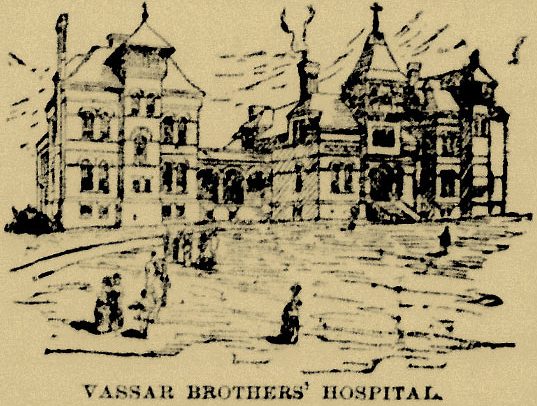
Illustration of the new Vassar Brothers’ Hospital from the 1887 Atchison Journal, Atchison, Kansas
After describing the three populations the hospital is to serve (the unfortunates of Poughkeepsie, of Dutchess County, and of New York State), the article informs us, “Its chief interest to the general public, however, consists in the fact that it is built upon a plan conceived in accordance with the latest conclusions of medical science, and success therefor in securing perfect ventilation and preventing gangrene will be of vast benefit in building hospitals hereafter.”
This wonderful institution, The Vassar Brothers Hospital, was incorporated in 1882. Its doors opened in 1887 with 40 beds, two isolation rooms, a maternity ward and nursery, and three private rooms. Over the intervening years, it expanded to 365 beds, a cancer center, heart center, neonatal emergency care unit, and other state-of-the-art health care facilities.
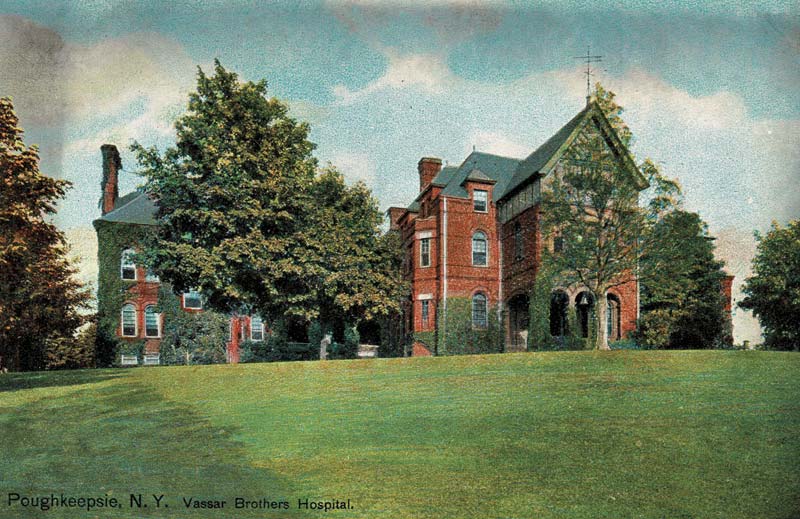
Postcard: Poughkeepsie, N.Y. Vassar Brothers Hospital, circa 1909.
The next iteration of health care is to open shortly at the site. The facility is now owned by Health Quest, a partner of Nuvance Health. The new, high-tech hospital, designed by CallisonRTKL, will cost over $585 million. In addition to all the bells and whistles you would expect, it soon will be home to a medical school in connection with Marist College just up the Hudson River from the hospital.
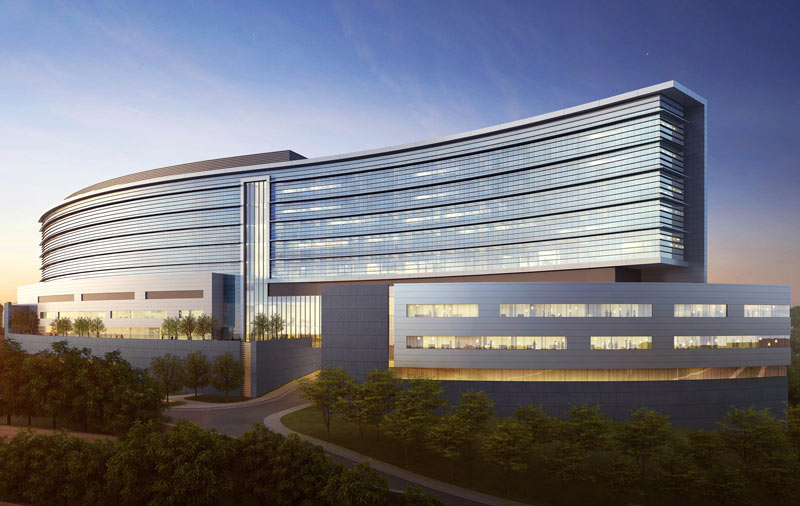
Concept Image of completed patient pavilion courtesy of Vassar Brothers Hospital. It is expected to open in 2020.
Good for What Ails Us
And to what humble beginning do we owe all this? Ale. Well, actually the public’s love of ale, the personal fortunes it generated, and the philanthropy of the family who had a knack of knowing what ailed the public as well as the ale the public wanted.
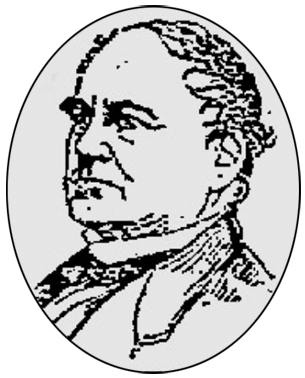
Illustration of Matthew Vassar from the Jan. 24, 1889 Jackson Sentinel, Maquoketa, Iowa.
The Vassar family brewery was founded in 1801 by a French Huguenot emigre from England, James Vassar. His son, Matthew Vassar (1792–1868), made the brewery the early foundation of wealth the Vassar’s eventually used to finance their many philanthropic enterprises over the next several decades. Matthew’s brother, John, who died in an explosion at their father’s brewery left two sons, John Guy and Matthew, Jr. While Matthew, Sr., founded Vassar College in 1861, John Guy Vassar and Matthew Vassar, Jr. were most prominent in founding Vassar Hospital (1882).

Illustration of John Guy Vassar from the Jan. 24, 1889 Jackson Sentinel, Maquoketa, Iowa.
According to an article in the Fort Wayne Weekly Sentinel newspaper dated November 7,1888 and titled “Vassar’s Will,” The Great Philanthropist Had No Heirs and Bequeathed His Property To Public Charities.” It goes on to list all the charities including fourteen curches at $500 each and larger sums to the Baptist Church of Christ, the YMCA, the Women’s Christian Association, Old Ladies Home, House of Industry, SPCA and the fire department all of Poughkeepsie. There were also several other organizations for the aged–among them, my favorite, the Vassar poor widows coal fund, $5,000–, $17,000 to the Vassar Brothers Hospital, $10,000 to the Vassar laboratory. To Vassar College $40,000 to endow a chair for natural history and $40,000 to endow a chair of modern languages.
And the list went on. Although the college and the hospital garner most of our attention today, we can also thank the Vassars for leaving a family home, Springside and its gardens designed by Andrew Jackson Downing to the public. Some things did not stand the test of time–among them, the Vassar Institute, a library and natural history museum, Vassar Home for Aged Men, the John Guy Vassar orphan asylum though it was listed at $81,000 in the will. Any residual monies after his will was executed were to be divided evenly among Vassar Hospital, Vassar College, and the orphans’ home.
The will was dated February 8, 1885. The named executors were James H. Weeks, Oliver H. Berth, and Edward Van Kleek, all residing in Poughkeepsie.
A subsequent article November 27, 1888 in the Fort Wayne Sentinel notes John Guy gave $200,000 to the hospital. It also listed Matthew, Jr.’s donations to many institutions. To give some idea of the current value of the philanthropy of the Vassar family, a dollar in 1888 is the equivalent today of $27.05 according to Consumer Price Index inflation calculator. The news story ends with these words, “The bequests of the two Vassars serve to transmit the name in connection with education and charity to generations far into the future.”
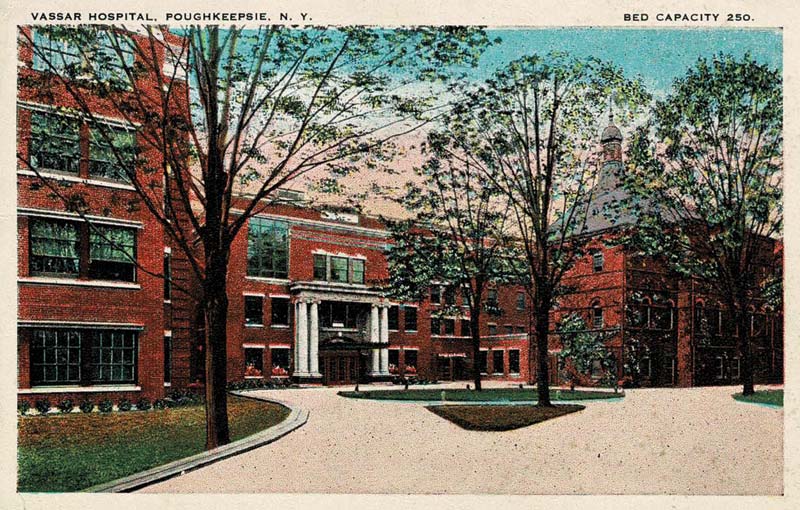
Vassar Hospital, Poughkeepsie, N.Y. Bed Capacity 250. Postcard image postmarked 1925.
“We are raising the bar on how healthcare is delivered in this community, and we are changing how patients in our community experience that care,” said Françoise Dunefsky, chairwoman of the medical center’s Board of Trustees. “I am quite certain that if brothers Matthew and John Guy Vassar were with us today, they would be very, very pleased with where we are taking their hospital.”
